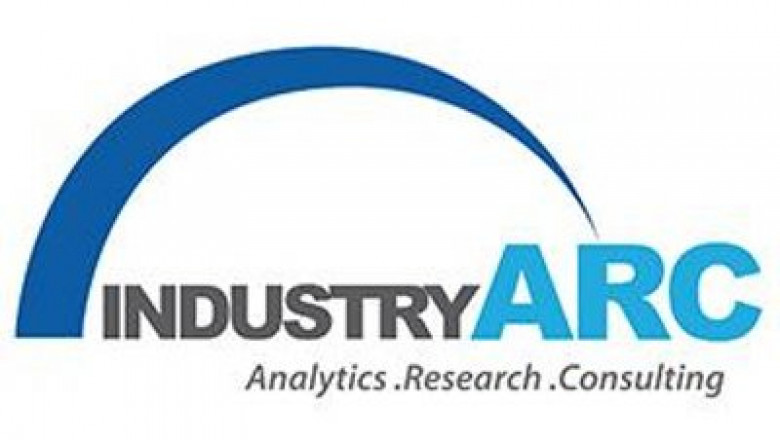views

Global Agricultural Herbicide Market Report
The global Agricultural Herbicide market size is forecast to reach US$42.8 billion by 2027, after growing at a CAGR of 5.2% during 2022-2027. Agricultural herbicide is used to kill the weed and also to control the unwanted plant growth on agricultural land. The most commonly used herbicides are glufosinate ammonium, fluazifop, and fluroxypyr among others. The growing needs of people require an increased agriculture output; which in turn boosts the demand for herbicides in the market. For instance, according to International Herbicide-Resistant Weed Database, there are around 512 unique cases of herbicide-resistant weeds globally, with 266 species of which 153 dicots and 113 monocots. Weeds have evolved resistance to 21 of the 31 known herbicide sites of action and 165 different herbicides. Therefore, the growing need for herbicides to control weeds is boosting the demand for the agriculture herbicides market. However, due to Covid-19 pandemic, the market has declined in 2020, owing to the shutdown of the manufacturing facilities to reduce the spread of the virus. But the market is expected to follow an increasing trend due to the growing consumption, to boost the agriculture output.
Report Coverage
The “Global Agricultural Herbicide Market Report – Forecast (2022-2027)” by IndustryARC, covers an in-depth analysis of the following segments in the agricultural herbicide industry.
Key Takeaways
- The Asia Pacific is expected to register a CAGR of 6.5% during the forecast period (2022-2027). The increasing demand for agricultural herbicides to control weeds & unwanted plant growth to boost productivity among Asian countries such as China, India, Japan, and South Korea is driving the global agricultural herbicide market.
- The adoption of bio-based herbicides in North America and Europe due to strict government regulation, and environmental pollution with chemical-based herbicides will drive the global agriculture herbicides market during the forecast period.
- The rapid increase in food demand with the growing population is surging the need and demand for herbicides between 2022-2027.
- The decrease in agricultural land with the growing urbanization is also increasing the demand for agriculture herbicides to boost agriculture productivity.
The biobased agricultural herbicide segments accounted for around 20% of the market share in 2021 and are estimated to grow at a significant CAGR during the forecast period. Biobased is widely used owing to the growing health hazards and environmental pollution by chemical-based weed control solutions. The most commonly used bio-based herbicide is obtained from phytotoxins among others. For instance, according to the Organic Trade Association 2020 Organic Industry Survey, U.S. organic food sales hit US$50.1 billion in 2020, with a rise of 4.6% from 2019. Therefore, the boost in organic products will increase the need and demand for bioherbicides and in turn would surge the agriculture herbicides market.
Global Agricultural Herbicide Market Segment Analysis - By Crop Type
The cereals & grains segment accounted for approximately 30% of the market share in 2021 and is estimated to grow at a significant CAGR during the forecast period. Cereals & grains are highly consumed food across the globe. The increase in demand for food with limited agricultural land is boosting the demand for agricultural herbicides as it is widely used to kill weeds and helps to increase the agricultural output. According to US Food & Agriculture Organization, there is around 0.9% estimated year-on-year increase in global cereal production in 2021, largely attributed to a higher maize output. Cereal consumption is also estimated to increase by 1.1% in 2021-22, owing to the expansions in food consumption (especially of wheat and rice), other uses (largely of maize), and feed use (mostly of maize). Therefore, the growing consumption of cereals & grains will eventually increase the need & demand for herbicides during the forecast period.
Global Agricultural Herbicide Market Segment Analysis - By Geography
Asia Pacific region held the largest share in the global agricultural herbicide market in 2021 up to 55%, owing to the presence of a large amount of agricultural production land and the growing food industry. The comprehensive use of herbicides in the production of food and the implementation of strict regulation for the use of a hazardous chemical is increasing the demand for biobased herbicides. According to International Trade Administration, China is the third-largest export market for the U.S agricultural products at US$13.9 billion in 2019. According to the Australia Department of Agriculture, Water & Environment, the agricultural production value is forecasted to be US$80.4 billion in 2022-2023. Thus, the growth in agriculture production activity will help to boost the demand for herbicides to boost up the agriculture to cater the growing need for food during the forecast period.
Global Agricultural Herbicide Market Drivers:
The growing food demand and Limited agricultural land owing to urbanization are boosting the demand for agricultural herbicides
Food is a basic necessity across the globe. The increase in food needs would help raise the demand for herbicides to boost agriculture productivity. Also, rising urbanization is decreasing the agricultural land but increasing the demand for food. According to World Bank, agricultural development is one of the most powerful tools to end extreme poverty, boost shared prosperity and feed a forecasted population of 9.7 billion by 2050. To cater to the food demand, farmers usually opt for herbicides to kill the weeds that help to increase agricultural productivity. According to Invest India, the total food grain production in India has recorded 308.65 million tonnes in 2021 which is 11.15 million tonnes higher than in 2020. The agriculture sector is the primary source of livelihood in India for about 58% of India’s population. Thus, the growing food demand and limited agricultural land due to the rise in urbanization will boost the demand for agriculture herbicides during the forecast period.
Increasing demand for organic Products
The consumption of organic products has increased rapidly across the globe due to their eco-friendly nature. Plant-based products are extracted from organic agriculture practices and can be grown anywhere. The growing number of lactose-intolerant populations across the globe is increasing the demand for herbicides. According to Soil Association Certification Organic Market Report 2022, the organic market in the UK is expected to grow with year-on-year growth of 5.2% in 2022 and is expected to reach US$3.76 billion. Thus, the growing demand for organic products will boost the demand for biobased herbicides to boost agriculture output during the forecast period.
Global Agricultural Herbicide Market Challenges:
The growing concerns about the consumption of synthetic herbicides
Synthetic herbicides are widely used in most of the developing nations owing to their availability at a lower cost. Lack of awareness is also another factor, boosting the chemical-based herbicides which are not only toxic to human health, but also to other living beings and pollute the soil. Most synthetic herbicides cause breathing, digestion problems and skin irritation owing to the presence of chemical substances in them. Thus, an increase in health hazards has risen the strict government regulation in most of the countries regarding the production of herbicides and would consequently hamper the market growth during the forecast period.
Global Agricultural Herbicide Market Industry Outlook
Technology launches, acquisitions and R&D activities are key strategies adopted by players in the global agricultural herbicide market. Global Agricultural Herbicide’s top 10 companies include
- BASF SE
- Syngenta International AG
- Bayer Crop Science
- Corteva AgriScience
- United Phosphorus Limited (UPL) Ltd.
- Dow DuPont
- SCOTTS
- Nufarm Limited
- Adama Agricultural Solutions Ltd.
- FMC Corporation
Recent Developments
- In May 2022, BASF launched a new Herbicide Vesnit (complete for Sugarcane) to empower farmers with a whole new level of post-emergent weed control ensuring better yield for their crop.
- In September 2020, BASF SE (Ludwigshafen, Germany) acquired the proprietary Glu-L technology for L-glufosinate ammonium from AgriMetis, an industry leader in the development of biotechnological innovations for crop protection. Owing to this, BASF Agricultural Solutions will offer its customers more efficient products to protect against unwanted weeds with an improved formulation.
- In April 2020, Corteva Agriscience, a leading pure-play agriculture company, and AgPlenus, a subsidiary of Evogene Ltd., announced to enter into a multi-year collaboration for the development of novel herbicides.
Relevant Reports
Pesticides Market – Forecast (2022 - 2027)
Report Code: CMR 1049
Insecticides Market – Forecast (2022 - 2027)
Report Code: CMR 0421
Household Insecticides Market – Forecast (2022 - 2027)
Report Code: CMR 14141
For more Chemicals and Materials Market reports, please click here












